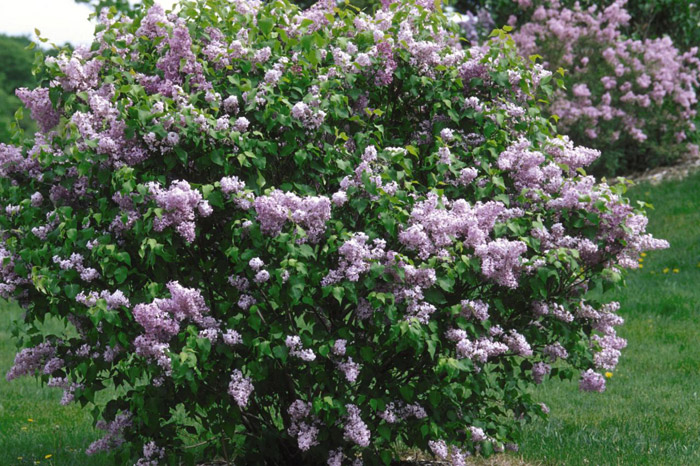When I started working in sales at our nursery and saw how many different lilacs varieties there are in every shape and size and colour I thought to myself “Aren’t they pretty.” I thought for sure that a lilac’s best trait was its beautiful flowers and lovely fragrance. What I did not know at the time was that they are also some of the best Manitoba survivalists available. Cold, wind, heat, drought, poor soil: lilacs do it all. The only things they will not put up with is the deep shade, soggy soil and total drought. For this reason they are some of the best shrub options for planting in shelter belts and hedges.
Interestingly enough there are no lilacs native to the American continents. When the Mennonites first moved to Manitoba they brought Common Lilacs with them from Europe to plant around their farm yards because they knew they were dependable. Now it is that hedge with purple flowers you see on almost every corner in early June.
Common Lilacs are known for being multi-stemmed plants, developing a wide crown about 2′ across where multiple trunks sprout from the ground. As they get older and begin to decline or undergo stressful conditions they can begin to send out sucker shoots from their root system and become invasive. In a shelter belt around a farm this is excellent as it thickens the row for blocking wind, but in the front yard it can be troublesome. So long as the plants remain in good health, they typically keep their roots and shoots beneath the soil.
When fully grown the Common Lilac will grow to be 10′ tall and wide. Their size can be controlled with a yearly pruning and can be kept as short as 4′ if the pruning is consistent from year to year. The best time to prune any lilac is right after they finish blooming. For Common Lilacs this should be in the second week of June. Once their flowers begin to wilt there is a window of about two weeks in which you can safely prune them. Once those two weeks have passed they will set their flower buds for next spring and hold them dormant in the branches until the following spring. This means that pruning them in fall or early spring will cut off the flower buds before they get a chance to open resulting in a flowerless year. For those with allergies this could be beneficial, but if you want to enjoy the flowers it is borderline self-sabotage.




